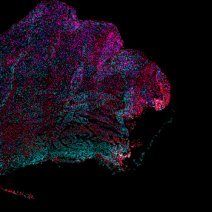Choroid plexuses carry nodal-like cilia that undergo axoneme regression from early adult stage
K. Hoa Ho, A. Candat, V. Scarpetta, M. Faucourt [...] A. Genovesio, A. Meunier, M. Sassoè-Pognetto, M. S Brill, N. Spassky, A. Patrizi
Authors
Kim Hoa Ho, Adrien Candat, Valentina Scarpetta, Marion Faucourt, Solene Weill, Chiara Salio, Elisa D’Este, Martin Meschkat, Christian A Wurm, Matthias Kneussel, Carsten Janke, Maria M Magiera, Auguste Genovesio, Alice Meunier, Marco Sassoè-Pognetto, Monika S Brill, Nathalie Spassky, Annarita Patrizi.
Abstract
Choroid plexuses (ChPs) produce cerebrospinal fluid and sense non-cell-autonomous stimuli to control the homeostasis of the central nervous system. They are mainly composed of epithelial multiciliated cells, whose development and function are still controversial. We have thus characterized the stepwise order of mammalian ChP epithelia cilia formation using a combination of super-resolution-microscopy approaches and mouse genetics. We show that ChP ciliated cells are built embryonically on a treadmill of spatiotemporally regulated events, starting with atypical centriole amplification and ending with the construction of nodal-like 9+0 cilia, characterized by both primary and motile features. ChP cilia undergo axoneme resorption at early postnatal stages through a microtubule destabilization process controlled by the microtubule-severing enzyme spastin and mitigated by polyglutamylation levels. Notably, this phenotype is preserved in humans, suggesting a conserved ciliary resorption mechanism in mammals.
More information
Dev Cell. 2023 Dec 4 ;58(23):2641-2651.e6. doi : 10.1016/j.devcel.2023.10.003.


